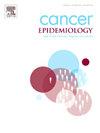Adult glioblastoma in England: Incidence, treatment, and outcomes with novel population-based strata
IF 2.3
3区 医学
Q3 ONCOLOGY
引用次数: 0
Abstract
Introduction
Malignant brain tumours are the leading cause of cancer death in the under 40’s and they have the highest average-years of life lost. England has a long-running system for national cancer data collection. In this work we present data on incidence, treatment and survival in all adult glioblastoma patients in England diagnosed between 2013 and 2018.
Methods
GlioCova uses a linked pseudo-anonymised data set of all adult patients in England diagnosed with a primary brain tumour between 2013 and 2018. We identified all patients with a glioblastoma (GBM) based on ICD-10 diagnosis and tumour morphology.
Results
In the 6-year period of the study (2013–2018 inclusive), 15,181 patients were diagnosed with a GBM in England. The national age-standardised incidence was 4.98 adult glioblastoma patients per 100,000 per year, with men having a higher incidence than women (6.3 and 3.8 respectively). Overall, 79 % of patients received treatment (76 % female vs. 81 % male, p = 0.22), with younger patients more likely to be treated than older patients. Median overall survival was 16 months in those receiving aggressive treatment, but 7 months in the whole cohort. 21 % of patients received no treatment, and 17 % of patients underwent surgery or biopsy alone.
Conclusion
Age-adjusted incidence of GBM is stable, although absolute numbers are rising, and prognosis remains poor. Only 29 % of patients receive aggressive multi-modality treatment, and we suggest that taking a population-level approach to GBM reveals significant areas for improvement.
英国成人胶质母细胞瘤:发病率、治疗和以新型人群为基础的结果
恶性脑肿瘤是40岁以下人群癌症死亡的主要原因,他们的平均寿命损失最高。英国有一个长期运行的国家癌症数据收集系统。在这项工作中,我们提供了2013年至2018年间英国所有成年胶质母细胞瘤患者的发病率、治疗和生存数据。gliocova使用了2013年至2018年间英国所有被诊断患有原发性脑肿瘤的成年患者的关联伪匿名数据集。我们根据ICD-10诊断和肿瘤形态确定了所有胶质母细胞瘤(GBM)患者。结果在研究的6年期间(2013-2018年包括在内),英国有15181例患者被诊断为GBM。全国年龄标准化发病率为每10万人每年4.98例成人胶质母细胞瘤患者,男性发病率高于女性(分别为6.3和3.8)。总体而言,79 %的患者接受了治疗(76 %女性vs 81 %男性,p = 0.22),年轻患者比老年患者更有可能接受治疗。接受积极治疗的患者中位总生存期为16个月,而整个队列的中位总生存期为7个月。21% %的患者未接受治疗,17% %的患者单独接受手术或活检。结论经年龄调整的GBM发病率稳定,但绝对数字在上升,预后较差。只有29 %的患者接受了积极的多模式治疗,我们建议采取人群水平的方法来治疗GBM,可以发现显著的改善领域。
本文章由计算机程序翻译,如有差异,请以英文原文为准。
求助全文
约1分钟内获得全文
求助全文
来源期刊

Cancer Epidemiology
医学-肿瘤学
CiteScore
4.50
自引率
3.80%
发文量
200
审稿时长
39 days
期刊介绍:
Cancer Epidemiology is dedicated to increasing understanding about cancer causes, prevention and control. The scope of the journal embraces all aspects of cancer epidemiology including:
• Descriptive epidemiology
• Studies of risk factors for disease initiation, development and prognosis
• Screening and early detection
• Prevention and control
• Methodological issues
The journal publishes original research articles (full length and short reports), systematic reviews and meta-analyses, editorials, commentaries and letters to the editor commenting on previously published research.
 求助内容:
求助内容: 应助结果提醒方式:
应助结果提醒方式:


